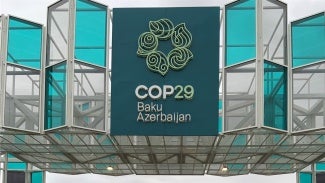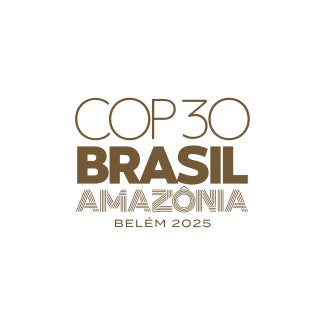AIA Champions Climate Action with Building Solutions at COP29 for Enhanced Resilience
AIA is sending a delegation to COP29, the 2024 United Nations Climate Change Conference, in Baku, Azerbaijan. This is the fourth year AIA has sent a delegation. AIA is advocating on behalf of the profession and is reinforcing the critical value of the historic Paris Agreement. AIA is strongly encouraging policymakers to remain engaged and increase the urgency and ambition of actions to keep global warming to 1.5 degrees Celsius.

WASHINGTON – November 12, 2024 – The American Institute of Architects (AIA) is sending a delegation to COP29, the 2024 United Nations Climate Change Conference, in Baku, Azerbaijan. This is the fourth year AIA has sent a delegation. AIA is advocating on behalf of the profession and is reinforcing the critical value of the historic Paris Agreement. AIA is strongly encouraging policymakers to remain engaged and increase the urgency and ambition of actions to keep global warming to 1.5 degrees Celsius.
The built environment significantly contributes to the carbon emissions that drive escalating temperatures, intensifying weather conditions, and an increasing loss of life. The AIA advocates for the profession of architecture’s needs, emphasizing that each $1 invested in mitigation and adaptation of the built environment saves $13 in the long term.
Architects play a profound role in combating climate change through innovative design and the adaptive reuse of existing buildings. Now more than ever, these practices are pivotal in enhancing sustainability and resilience across communities. In 2023, at COP28, 28 countries committed to a new Buildings Breakthrough Agenda to accelerate the industry toward near net-zero and resilient buildings as the norm by 2030. Architects possess the necessary skills required to implement these transformative changes on a dramatic scale, and AIA members are committed to leading these efforts.
During COP29, AIA is specifically calling for increased investment and research to develop and implement breakthrough technologies essential for decarbonizing the built environment. This is crucial to making advanced building technologies, such as zero-carbon materials and decentralized renewable energy systems, viable and widely accessible. Additionally, AIA is stressing the importance of improving codes and building performance standards to ensure that global best practices are adopted and enforced, contributing to energy-efficient and sustainable construction.
"As architects, our work is at the forefront of advancing design excellence and sustainable development," says 2024 AIA President, Kimberly Dowdell, AIA, NOMAC. "Our expertise in high-performance design for new buildings and adaptive reuse for existing infrastructure is crucial in transforming the built environment. To ensure success, we must establish strong partnerships with policymakers who share our vision for resilient and sustainable communities."
Led by Dowdell, AIA’s delegation will participate in the diplomatic heart of COP29, the Blue Zone, engaging policymakers and presenting these ideas at events, including an official UN event on Thursday, November 21. “Buildings Breakthrough for net-zero and resilient buildings: Solutions for effective transformation” is co-organized by AIA, the International Codes Council (ICC), the Royal Institute of British Architects (RIBA), and Delta Electronics Foundation. AIA also co-hosts “All In On Climate Resilience: Strategies and Partnerships for Impact” with FEMA on Thursday, November 14 at the America Is All In Action Center.
In conjunction with COP and in support of the Buildings Breakthrough initiatives and goals for decarbonization, resilience, health, and equity, AIA is publishing its first-ever AIA Materials Pledge ‘By the Numbers’ annual report. The AIA Materials Pledge boasts over 280 signatory architecture and design firms committed to selection of building materials that support human, ecosystem and climate health, social health and equity, and circular economy. The inaugural report outlines progress toward pledge goals from 92 reporting signatory firms, to include firmwide practices, as well as project and product-level metrics regarding material health. The full report can be found here.
This follows the recent publication of the AIA 2030 Commitment 'By the Numbers' report, which tracks the progress of global architecture firm signatories toward design of projects meeting net zero operational and embodied carbon. As the program marks a 15-year history, this year’s highlights include 24,000 projects reported, culminating in approximately 3.9 billion gross square feet. Projects reporting embodied carbon nearly tripled from the previous year and reported net zero projects jumped to 430 predicted projects, an increase of 24 percent from last year.
Follow AIA media relations on LinkedIn.
Complete our form to submit a press inquiry or speaking request.



